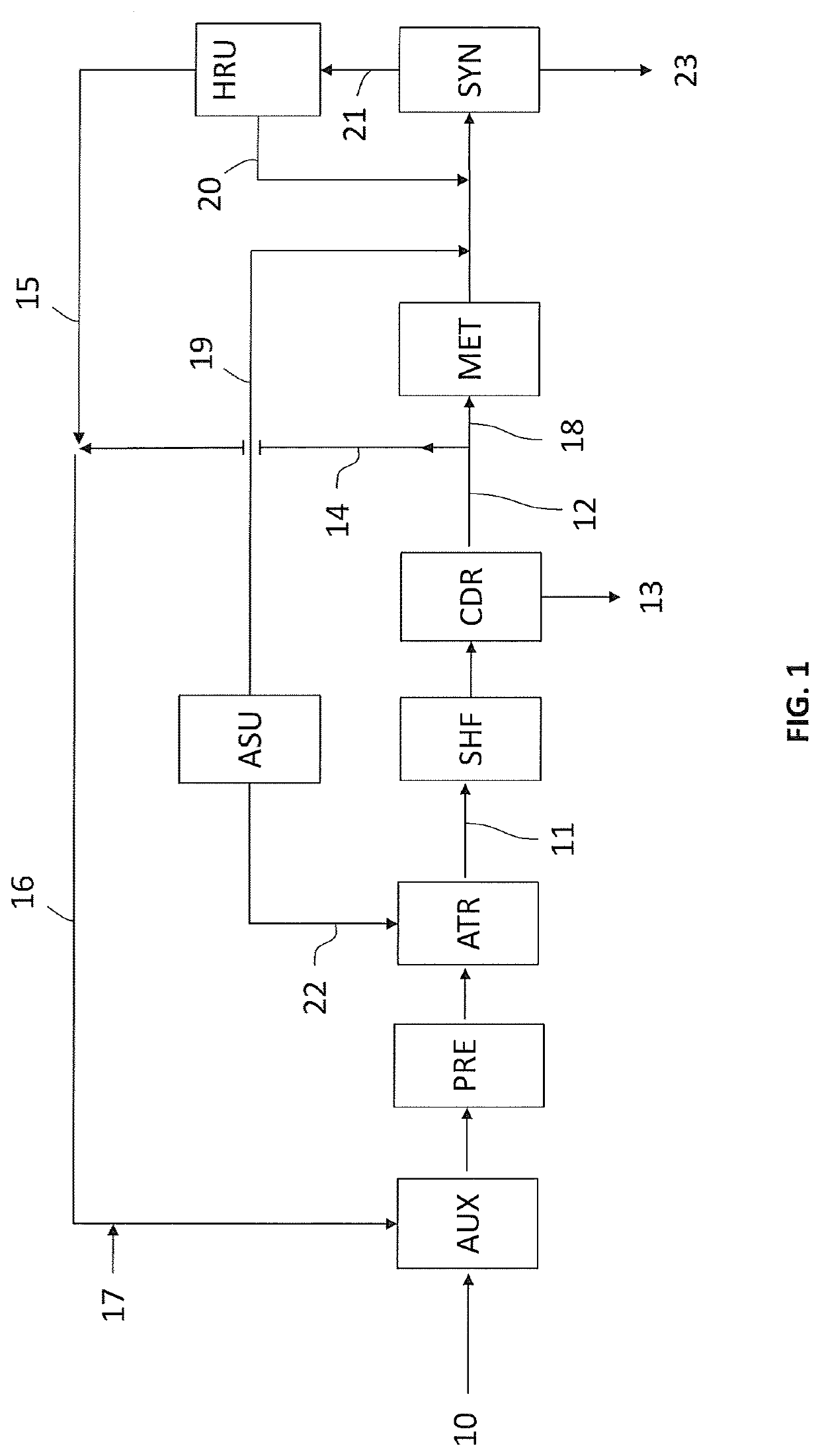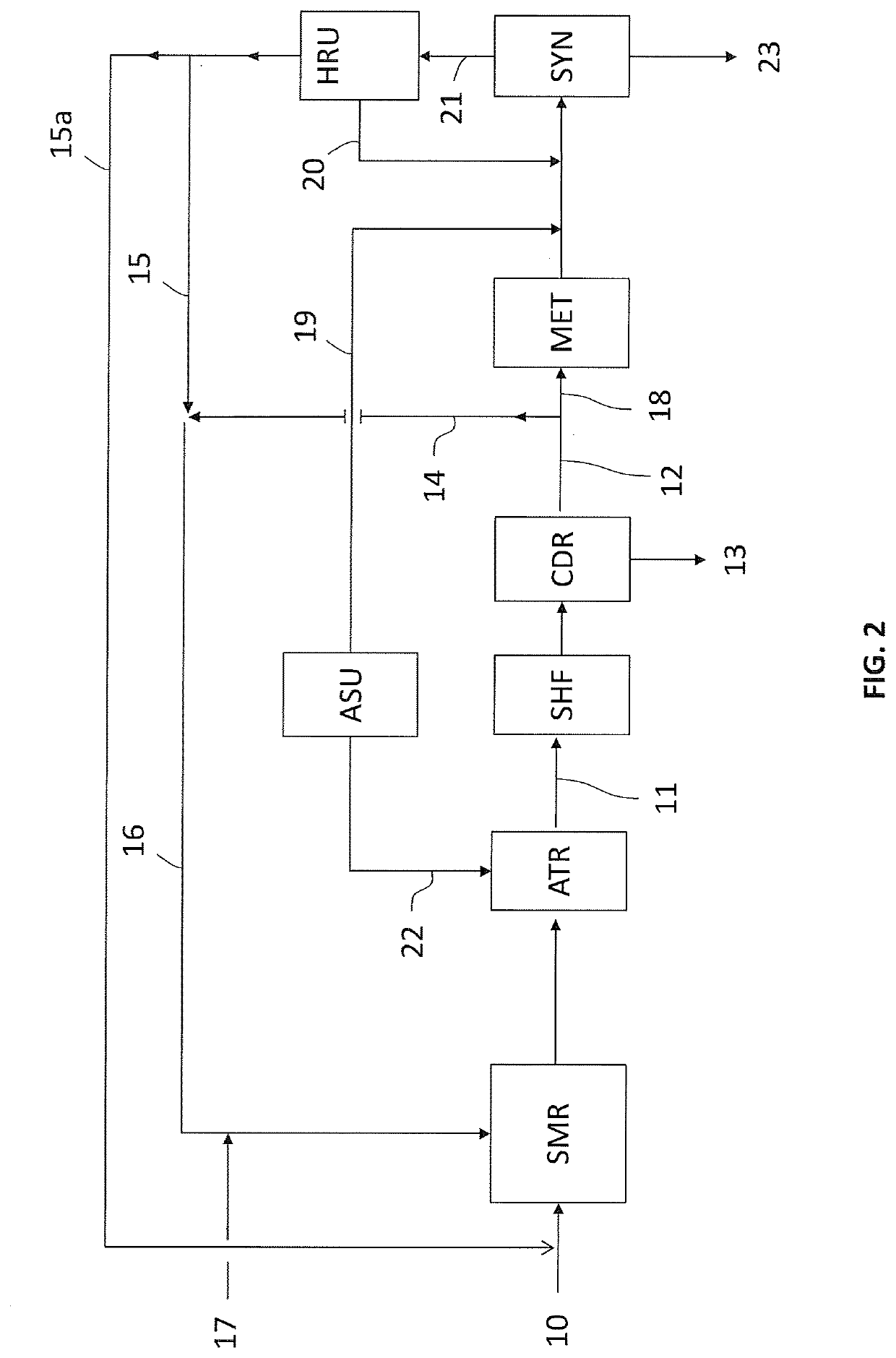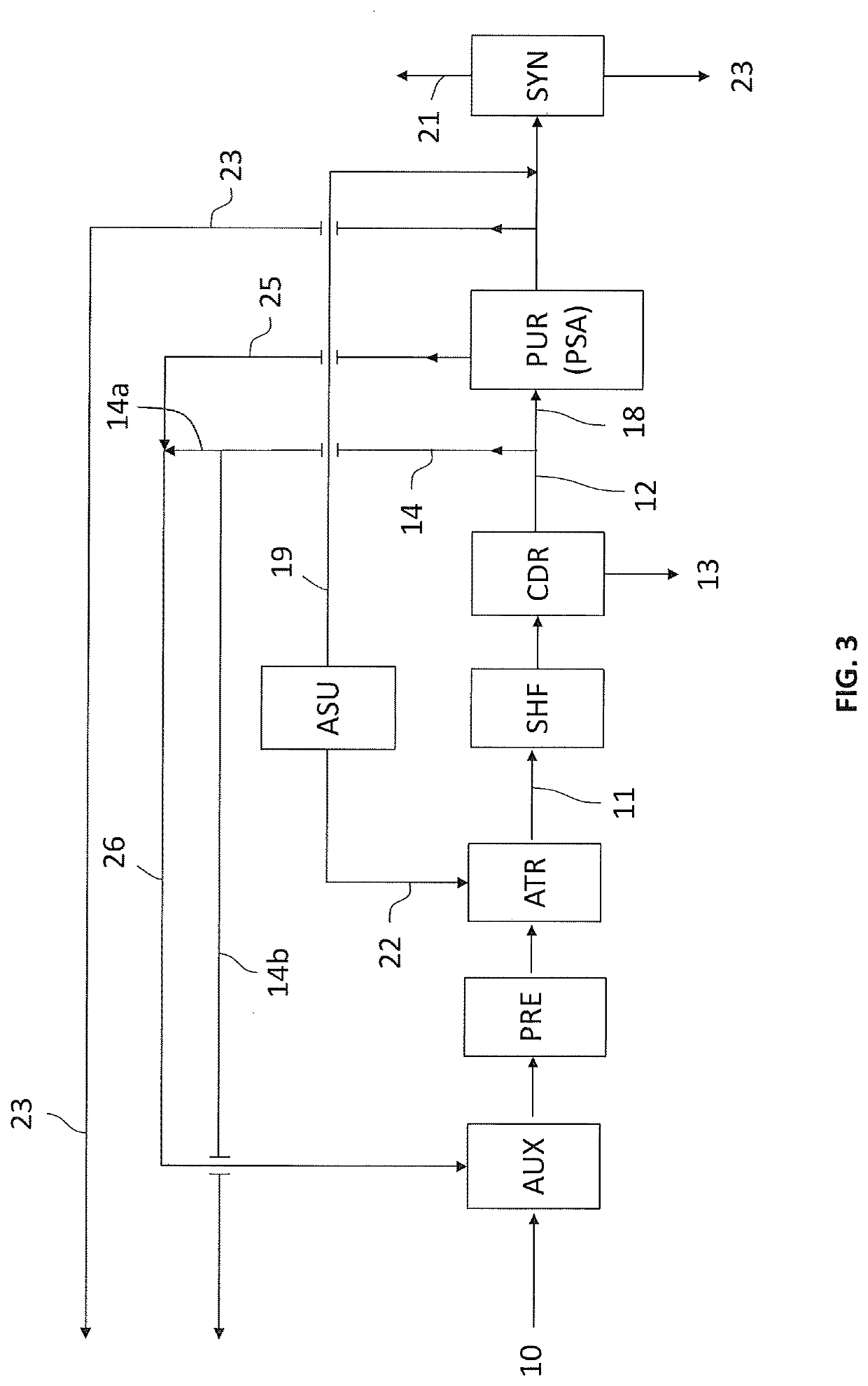Process for the synthesis of ammonia with low emissions of co2in atmosphere
a technology of ammonia and co2 in the atmosphere, which is applied in the field can solve the problems of increasing co2 flue emissions, increasing energy consumption, and less efficiency of ammonia synthesis plants, and achieves the effects of reducing co2 emissions, reducing co2 emissions, and increasing steam
- Summary
- Abstract
- Description
- Claims
- Application Information
AI Technical Summary
Benefits of technology
Problems solved by technology
Method used
Image
Examples
example
[0150]The following Table 1 refers to a plant with a capacity of 3000 metric tonnes per day (MTD) of ammonia produced.
[0151]Table 1 compares the following options:
(1) Plant of the prior art with primary reformer and air-fed secondary reformer.
(2) Plant of the prior art, as per option (1), with capturing of the CO2 from the fumes of the primary reformer.
(3) Plant according to the invention, as per FIG. 1.
(4) Plant according to the invention, as per FIG. 2.
TABLE 1Option(1)(2)(3)(4)Prior artPrior artInv.Inv.NH3 productionMTD3000300030003000Net Natural Gas consumption based on gas LHVGcal / t NH36.77.47.06.9(FEED + FUEL-Steam exported e.g. to urea)Gcal / t NH3+0.7+0.3+0.2CO2 captured in processMTD3600360052005100CO2 to atmosphere (contained in flue gas)MTD2100200200200CO2 to atmosphere (contained in flue gas)t / t NH30.70.10.10.1Main Equipment sizeTotal fired heater duty%10012075105(reformer / fired heater + auxiliary boiler)Process CO2 removal capacity%100100145140ASU O2 capacity%n / an / a10060Fl...
PUM
| Property | Measurement | Unit |
|---|---|---|
| temperature | aaaaa | aaaaa |
| temperature | aaaaa | aaaaa |
| temperature | aaaaa | aaaaa |
Abstract
Description
Claims
Application Information
 Login to View More
Login to View More - R&D
- Intellectual Property
- Life Sciences
- Materials
- Tech Scout
- Unparalleled Data Quality
- Higher Quality Content
- 60% Fewer Hallucinations
Browse by: Latest US Patents, China's latest patents, Technical Efficacy Thesaurus, Application Domain, Technology Topic, Popular Technical Reports.
© 2025 PatSnap. All rights reserved.Legal|Privacy policy|Modern Slavery Act Transparency Statement|Sitemap|About US| Contact US: help@patsnap.com



